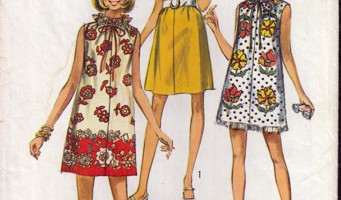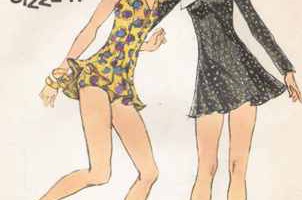I was a child of rock 'n roll
Read More
Can’t Bust ‘Ems

I still own a pair of black Can’t Bust ‘Em dungarees that I wore while working as a timber cutter at the Buckshot mine in Eldora, Colorado. I don’t wear them anymore — I’m a little beyond a 1970 waistline — but the rugged old pants still sport the brass buttons sewn onto the beltline to hold heavy red suspenders. I needed the suspenders to hold up the thick Can’t Bust ‘Ems — worn with waffle long johns underneath, two layered checked shirts, a heavy sheepskin vest and a Carhart “chore coat,” worn shiny by the Buckshot mine’s massive white pine timbers.
I lived and worked in a Rocky Mountain collective, it was October, and I wasn’t sporting bell-bottoms and a flowered shirt. My black Can’t Bust ‘Ems formed a sturdy counterculture variant, drawn from back-to-the-land necessities in an extreme climate, where all — regardless of background — worked with their hands to civilize rickety cabins, coax ancient trucks to life, haul wood, water and coal, and wield a chain saw. My Can’t Bust ‘Em uniform provided me with a warm and loose-fitting costume for those wind-driven days at Eldora’s Buckshot mine.
In 1970, Eldora was an abandoned mining town built within shotgun range of the Continental Divide. The mine was called the Buckshot in honor of the wind that roared through the narrow venturi between the rocky top of the Divide and the dense jetstream air above.
One year earlier, a quiet clairvoyant named Arthur Sigismunde bought the Buckshot. He was convinced that the old diggings still contained ore. It was possible. Previous to our counterculture endeavor, work on the Buckshot had come to an abrupt halt in the 1950s after the two owners had gotten into an argument. While one partner drove his truck down to Denver to talk to his lawyer, the second partner drank himself nasty and lowered a bucket of dynamite with a lit fuse halfway down the vertical mine shaft. The resulting concussion sent splintered mine timbers, copper wire, galvanized pipe and a cascade of gravel, granite, and mud spilling hundreds of feet down the shaft where the whole mess fused into a massive “plug” that blocked access to the ore below.
In an alleged fit of extrasensory clarity, Sigismunde had visualized masses of rich, silver ore pulsating below the plug. He managed to convince a clique of Denver entrepreneurs, men who could smell the romance of silver in the mountains and had money to spend. Sigismunde avoided hiring high-waged miners who belonged to the United Mine Workers. Instead, he hired Eddie Williams to run the operation.
Eddie was a pal of mine. He sported a similar, lived-in uniform to mine, replete with jeans, heavy suspenders and half-leather, half-rubber boots with felt linings for the winter and sweat socks in the summer. He called them “duck boots” and loved to comment that — except for his boots — it was rare to find a duck at 11,000 feet. Eddie was my age but loved to play old-time and was considered a genuine character in the fringes of Boulder’s academic aristocracy.
Boulder’s tiny cadre of literati marveled at Eddie’s “natural” intelligence and unpretentious, cut-to-the-chase style. He and Sigismunde had drifted through many a notable conversation at Boulder parties and Eddie had done a stint as a hard rock miner somewhere in his enigmatic past. So authentic did he appear, that few knew he had been disinherited as the black-sheep son of a Boulder professor emeritus.
Eddie immediately engaged a handful other counterculture workers from the collective. The amateur miners were supposed to re-timber the mine and untangle the mass of dynamited debris that hung, suspended precariously 800 feet above the bottom of the Buckshot’s shaft. Eddie and the others were literally dismantling the floor they stood on. Far above, on the surface, dressed in my layers of underwear, Can’t Bust ‘Ems, checked shirts, burnished leather vest, chore coat, and a blue watch cap, I roared through timbers with my screaming Stihl, ecstatic with the intensity of our wild adventure into the Colorado quartz, while the wind catapulted the sawdust past my leather- and wool-clad shoulders, over my blue watch cap and steel-toed boots, blowing like snow down the hillside.
Never had I lived further from a pair of bellbottoms.
# # #
Read more of my work at my web site and peruse excerpts of my ‘resistance’ series @ my Amazon author page.
First Grade, First Day
No one had prepared me for a darkened classroom.
Read More
Fringe
In the early days of high school I went to my first concert, Frank Zappa and the Mothers of Invention. They filled the Coliseum. To me it was an Event with a capital E and I remember clearly what I wore. A white blouse of dotted Swiss with big full sleeves gathered at the wrist, a long red maxi skirt (they weren’t too common yet), and the for the big finish, a chocolate brown suede leather vest. It was just a little thing in a bolero cut, but front and back it had long leather fringe that started at the yoke and went down to my knees. Did I wear a headband or am I inventing that part of the memory?
Two brothers from New York had come to town and opened up a sort of hippie boutique. I met them when I took in my hand beaded leather pouches, macrame jewelry and little painted cards with pen and ink poems to put on consignment. One of them was my date for the evening. It was assigned seating and he had gotten us really great seats very near the front. What a night, what a time. The only concert that came near to being as enjoyable to me was when Three Dog Night played a couple of years later. Stage craft, lighting and pyrotechnics, had come a long way in that short span of time and it was my first time seeing/hearing a Moog synthesizer. It must not have been quite as big a deal as I can’t remember what I wore.
Demons of the Cracking Voice
Clarinet and singing lessons turn into torture for a young boy going through puberty.
Read More
Shoes that Fit

About fitting in after moving to the US during high school.
Read More
Sewing My Own Clothes

My mom sewed my dresses when I was in elementary school. We would go to the store, usually J.C. Pennys and she and I would pick out patterns and fabric for the dresses.
Read More
What we wore in Oakland

Back in elementary school in Oakland CA, girls were not allowed to wear pants to school. We treasured the days when a field trip to a farm or park allowed us to come to school in our stretch pants – sometimes with stirrups on the feet! Disneyland made women and girls wear dresses to the park, and when taking an airline flight, one got dressed up.
By the time I hit junior high, the school district had loosened up the dress code. Jeans and pants were thankfully allowed. We worked hard to break in our Levi’s 501’s – no pre-washed in those days. No women’s styles, either. We proudly marched into the men’s department and tried on those treasured button front jeans. We welcomed the holes that eventually formed in the knees, and sometimes helped the process along. When they got too ratty, you just cut them off and had a pair of shorts or a skirt. No hems, of course.
Unlike Gillian’s story, we were allowed to wear mini, midi or maxi length skirts to school. I was always a shy child, but I wanted to fit in with the cool kids, so I convinced my mom to buy me a maxi skirt. The day I wore it to school I felt so uncomfortable because I just knew everyone was staring at me. Of course they weren’t, but my insecure side was sure they were. That skirt did not get a lot of wear. I do still have the mini dress, with maxi coat that I did wear quite a bit. Its in a box of memorable clothing that also includes my hippie style knitted vest with fringe at the bottom, and my hippie headband.
High school brought Hot Pants and Sizzlers – not the steak house:-) – into fashion. Looking back, a sizzler outfit was pretty much the same as the toddler dresses we wore with the little frilly matching underpants. Who would have thought! I sure hope that fashion statement doesn’t make a comeback.
Young Stylemaker

It was a time of experimentation and self-expression, and self-express we did.
Read More
Hippie clothes at Riverhills Elementary
Eager to join the ranks of the outre, we wore maxis to elementary school.
Read More

